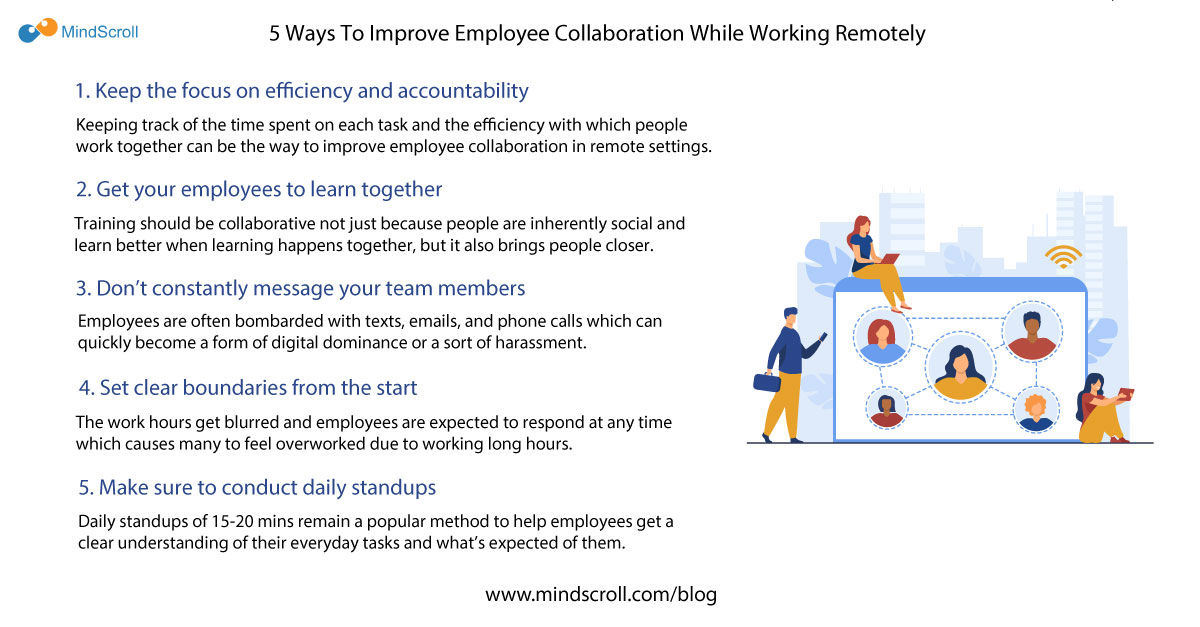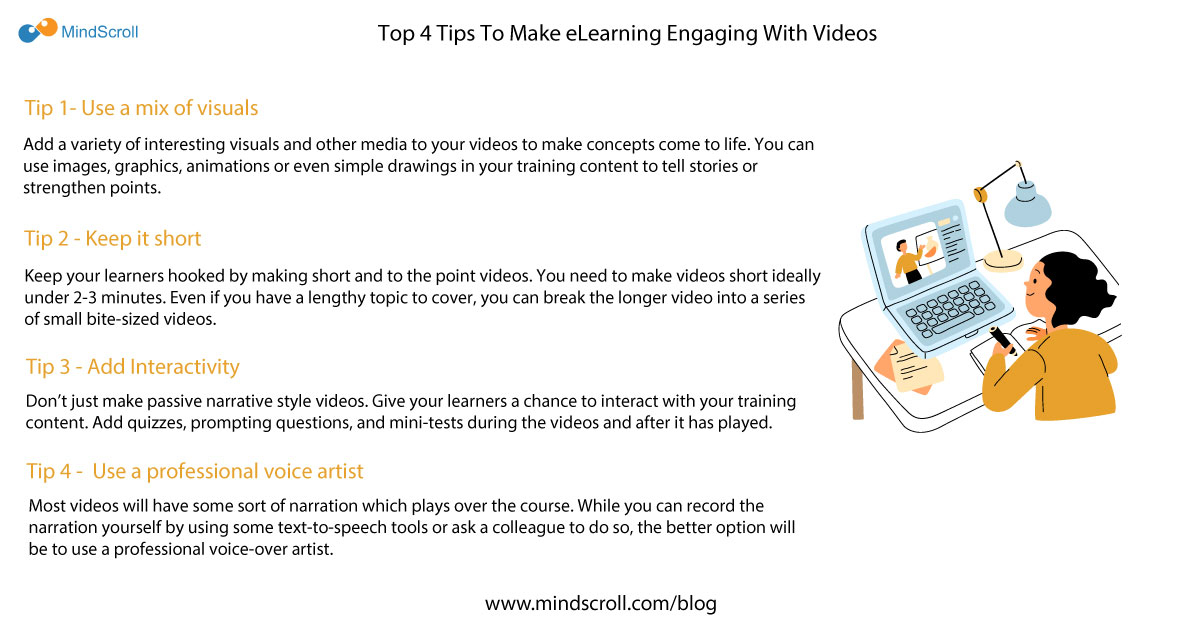Collaboration is a must for the success of any workplace. Tough projects are finished quicker, solutions are found faster, employees become more productive and engaged. However, the rise of remote and hybrid work has caused new challenges to employee collaboration.
Remote working has more downsides when it comes to working in a team. Why? Communicating in remote settings isn’t always easy. Lines of who we are at work and who we are at home have been blurred. Plus the way employees interact with each other has also changed due to this remote working trend. All this has made it even more crucial to foster good communication and team collaboration between employees.
So, how can your team survive and thrive in this challenging remote era? In this article, we have highlighted 5 ways to improve employee collaboration while working remotely:
1. Keep the focus on efficiency and accountability
Spending more time together on a task doesn’t mean collaboration. However, keeping track of the time spent on each task and the efficiency with which people work together can be the ways to improve employee collaboration in remote settings.
For instance, you could set up time limits for brainstorming sessions and meetings. You could also set clear deadlines for tasks and a script about the next steps in the case of employees struggling with all or parts of the process. Lastly, using project management softwares which include time tracking abilities would also be of great help.
2. Get your employees to learn together
In the remote working environment, it is essential that training is collaborative. Not just because people are inherently social and learn better when learning happens together, but also because it is a great way to bring people closer and promote a spirit of collaboration.
Now you should know that learning together goes beyond scheduling meetings and lectures for everyone on Zoom or MS Teams. Make sure to have lots of team/group activities for your employees. For example, you could have Jeopardy-style quizzes or problem-solving tasks for your employees to compete in or solve together. You could also assign a team member to become a mentor of another team. All this will help improve team building and elevate employee collaboration.
3. Don’t constantly message your team members
It can be seen in remote settings that employees are constantly bombarded with texts, emails, and phone calls. While following up on tasks using these mediums is easy and convenient. Yet it can quickly become a form of digital dominance or a sort of harassment if it is overused.
Keep in mind that any communication channel that you use creates different demands on the time of the recipient. Moreover, using all these channels for the same message is both annoying and ineffective. So, choose your digital volume carefully and ensure that your employees use such mediums diligently.
4. Set clear boundaries from the start
With working from home, the work hours get blurred and employees are expected to respond to calls, queries, and emails at any time. Many feel constantly on the edge due to working long hours. All of which leads to fatigue and overwork and causes the line between one’s work life and personal life to be violated.
Therefore, it is important that you set clear boundaries from the start on what’s acceptable and what’s not. Otherwise the overworking of the employees will increase employee burnout, discontent, and disinterest levels.
5. Make sure to conduct daily standups
In the remote environment, daily standups remain a popular method to help employees get a clear understanding of their tasks for that day and what’s expected of them. Daily standups in the form of short meetings of 15-20 mins help bring employees to the same pg at the start of each working day.
Further, they help your employees deliver tasks in a timely and well-coordinated manner where they can discuss the expected hurdles if any and the tasks which they will be doing along with their tentative deadlines. All this helps your remote teams to focus on the tasks of the next 24 hours which thereby increases their productivity and efficiency with which they perform their work duties.
Final Thoughts
Employee collaboration should be the norm especially in a remote working environment. As without it, remote working can be difficult, and productivity and participation levels can decrease. However the 5 ways of improving employee collaboration mentioned in this article can help you counter remote working challenges and create a truly collaborative workspace.
Schedule a demo if you want to know how you can use MindScroll LMS for improving collaboration while working remotely. Learn more about remote working with MindScroll on https://mindscroll.com/remote-work. Also read our article here to know more about the challenges of managing remote teams and their solutions. If you have any queries, do contact us at yg@infonative.net.
Did you like this blog post? Do you know of any other ways to improve the collaboration of remote teams that we missed? Tell us your thoughts or share this blog post on our social media platforms below:
Facebook (@MindScroll) | Twitter (@mindscroll_lms) | LinkedIn (@MindScroll) | Instagram (@mindscroll_lms)
Check our blog for resources you and your team may need.
Read next: What Do Modern Learners Want From Your Online Courses




